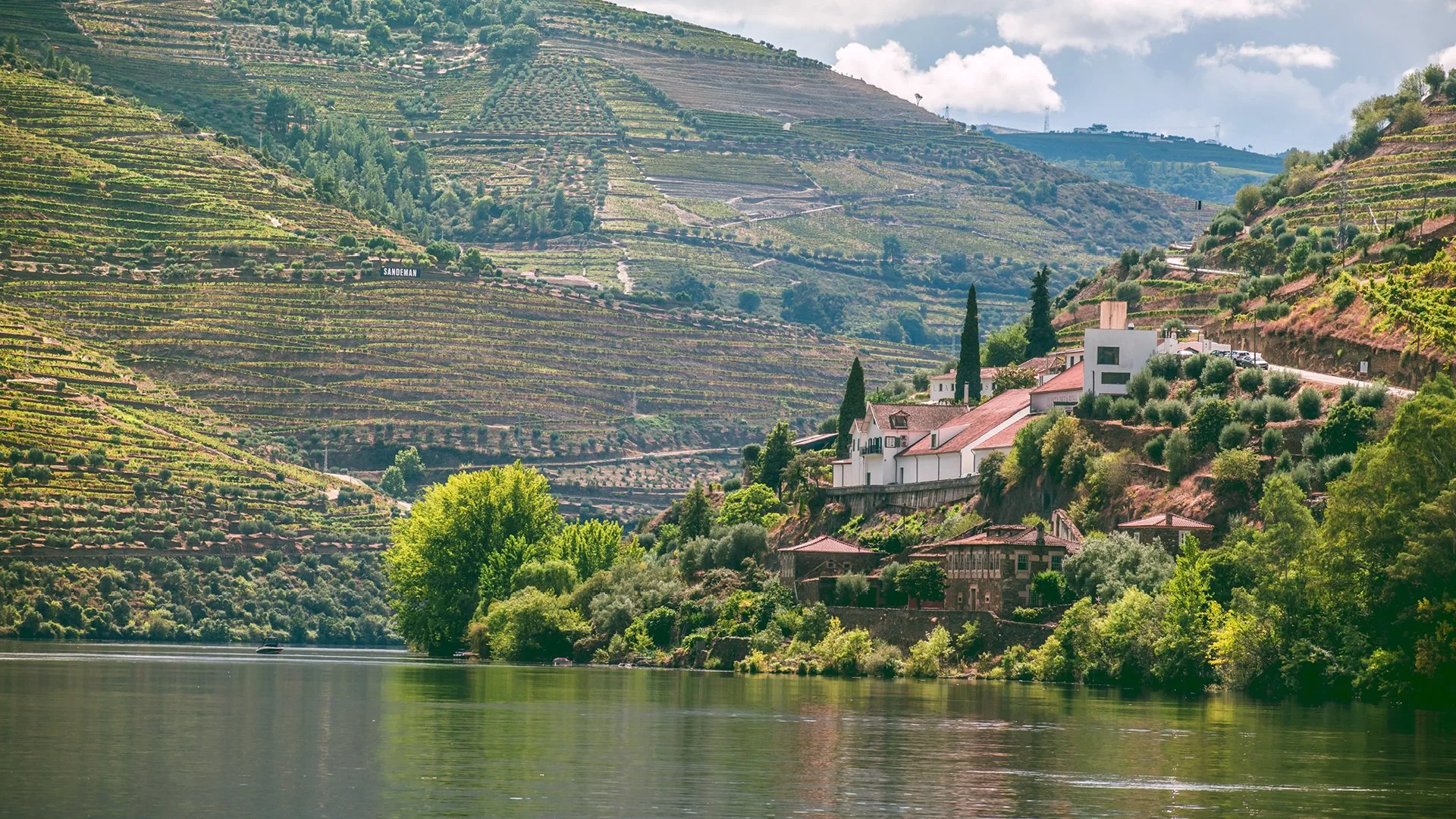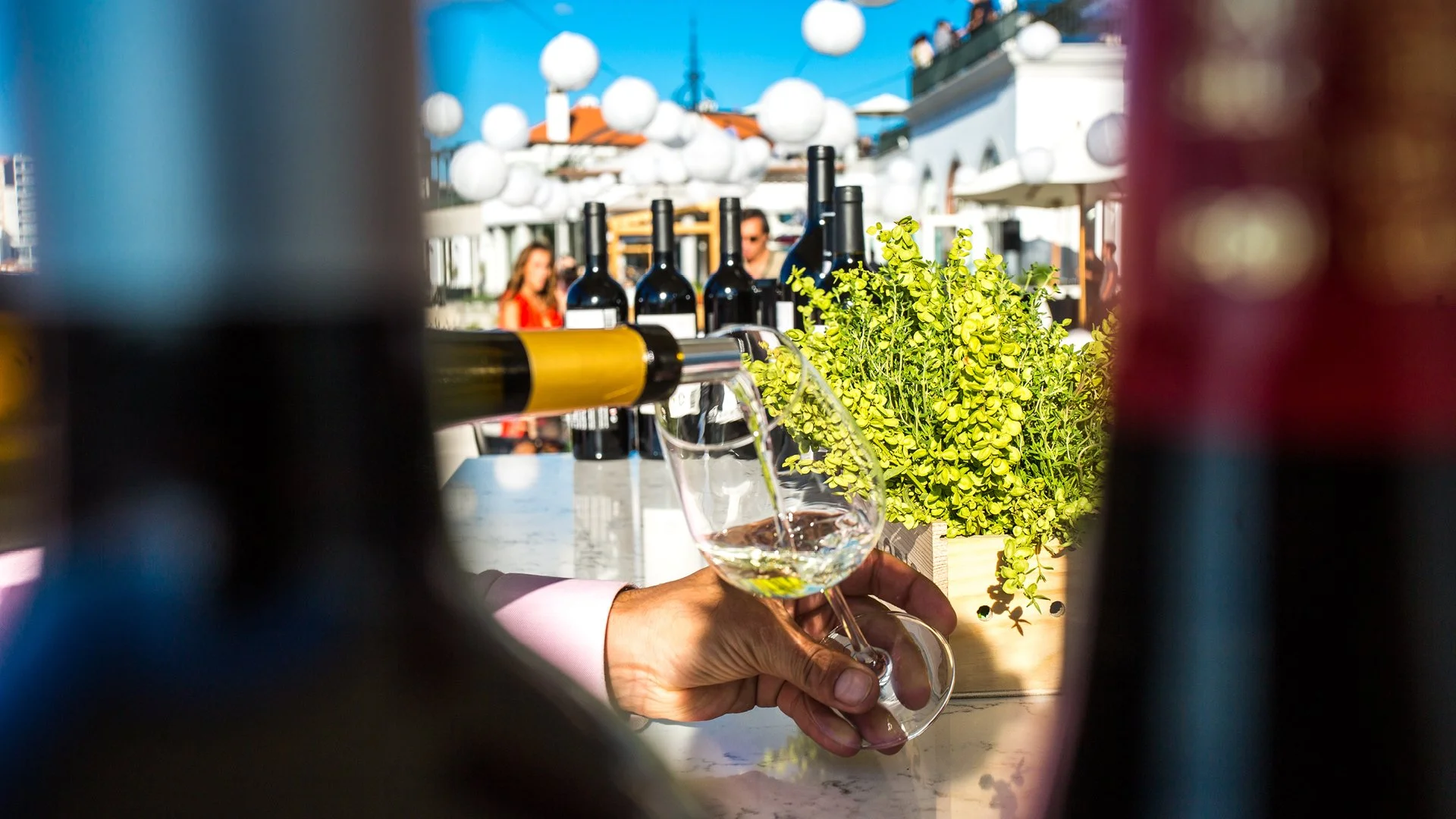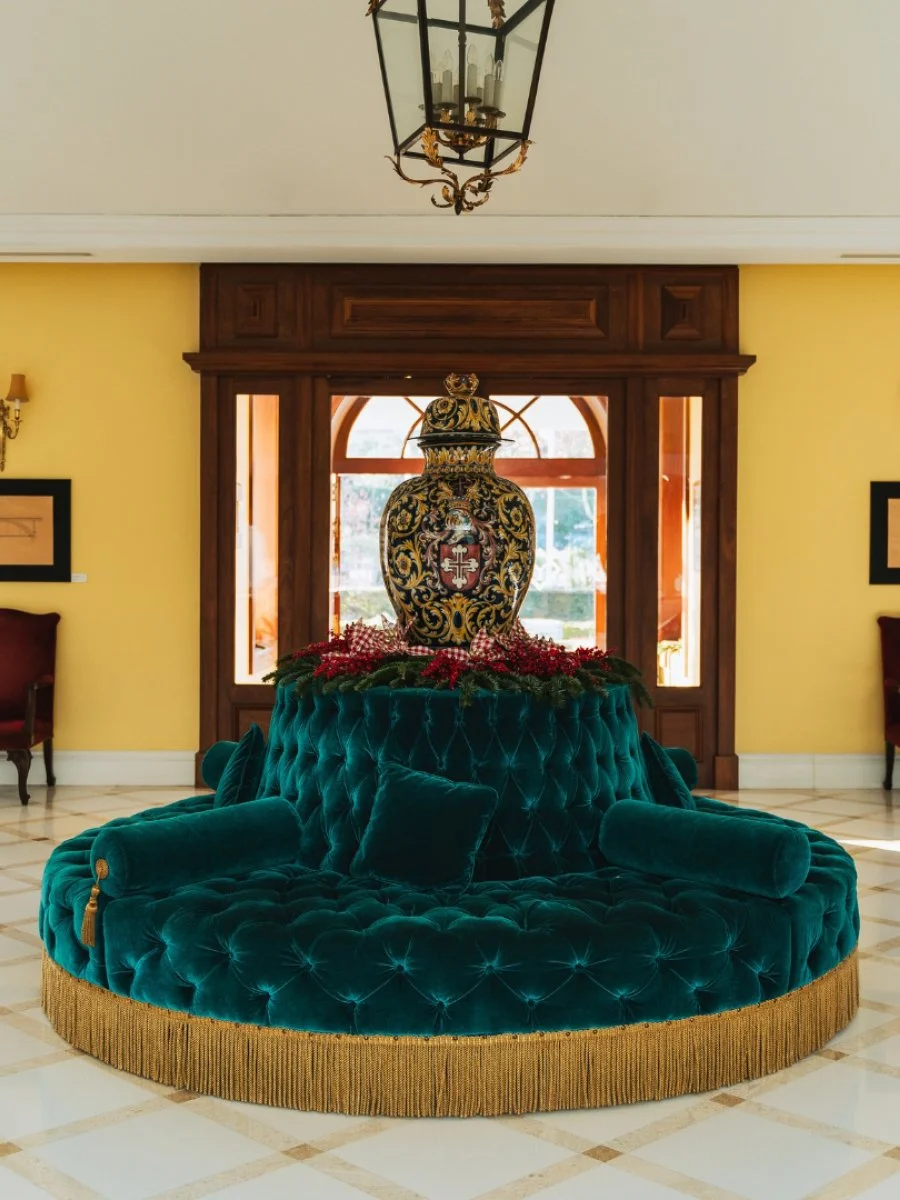A collector’s guide to Port
Boasting a collection of 4,500 bottles, we speak to publican Hubert Beatson-Hird about his favourite tipple, Port, about how best to enjoy it, and what makes it so magical.
The Douro Valley, famed for the stunning, steeply terraced vineyards that have long clung to either side of its meandering river, is one of the world's most fabled wine regions. In 1756, it became the first to be legally demarcated and regulated, largely thanks to the surging popularity of its most famous export: Port.
Due to the conflicts between the British and the French at the end of the 17th century – France had introduced heavy restrictions on the import of English goods, Charles II prohibiting the import of French wines in return – the English were forced to look elsewhere for her wine supplies. Turning to their European allies, the Portuguese, while the thin wines of the coastal regions were not to the liking of the English consumer, the strong and powerful wines found inland, in the remote and mountainous vineyards of the upper Douro valley, were just what they were looking for.
Wine was bought in large quantities, and was fortified with local brandy to ensure it would not spoil as it was shipped in barrels to be bottled back in England. This process killed the yeast, stopping fermentation dead in its tracks, trapping natural sugars and creating the sweeter, richer, and higher-alcohol wine known today as Port.
Its sweetness meant it was destined to become a popular after-dinner digestif, but served in the right way, Port is much more than just a drink. “What makes Port special is that it is an addition to a meal, it's not a necessity, it's an absolute luxury,” says Hubert Beatson-Hird, director of Lunar Pub Company, who recently opened The Elizabeth in Belgravia with Anthony Demetre. “If you want to have a drink with your meal, you think of wine, naturally, so Port becomes the celebratory crux.
“The drinking of Port has, sadly, decreased in the last ten years or so, but I still think it's the most magical thing in the world, chiefly because it effectively lasts forever. The fortified nature of it means that you know you can keep it for a very long time, and not in the same sense of wine where you can sort of put your nose up at different vintages. What I mean is, you’re not in a rush to drink it. It’s yours for when you want it, and I think that’s marvellous and magical.”
© Taylor’s
For Hubert, it’s not just about the drink itself, it’s the nature of the occasion in which it’s enjoyed. “The liquid is fantastic to behold, you get that sort of deep, dark, ruby finish to a drink. But really, it’s the fact that you've had your wine with your dinner, you're having your extra course, your cheese. That’s when the crux of the conversation comes out, and that deep, dark liquid just helps you get there.
“The Port that really made me fall in love was Taylor’s 1960, the year my father was born and the Port he would bring out at any special occasion. It really reeled me in to the magic that can be that extra glass after a lunch or a dinner that passes to better conversation.”
Many different styles of Port have been developed over the years: there’s Ruby Ports, the least expensive, aged for one to three years before bottling and sold ready to drink; Tawny Ports, which benefit from extended ageing in wooden casks from 10 to 50 years; while Vintage Ports, usually the most expensive, are made in small quantities from the very best grapes, and only in the very best years.
Naturally, the tasting experience varies greatly. “The first thing you’re looking for is that sort of velvety, evanescent tang that comes across from the fortification,” says Hubert. “With a Ruby, you are going to get hit in the face with that, it rolls over your tongue. As you get into the nice Tawny ports and all the way up to the Vintages, you will start looking for that thinness that is still full in the palette. For someone not well acquainted, an LBV [Late Bottled Vintage, a more approachable Port made from a single year's harvest] is a good way to introduce your palette.
“If it’s a Vintage Port, it needs to be in the bottle for at least 15 years,” he adds. “You’ve got to decant it, get a load of air going through it. But prime time, 25 to 35 years I’d say. And that’s the beauty of Port, it’s a huge window.”
As only wines produced in the Douro Valley can be labelled Port, it’s here that you find the most historic and famous houses, from Taylor’s to Graham’s, Warre’s and Dow’s – the English names a relic of their 17th century origins. “Taylor’s and Fonseca’s are fantastic, Warre’s is also brilliant, but Taylor’s is where you want to be,” he asserts.
And when it comes to what to buy, with his collector’s hat on, nostalgia is the path that Hubert advises. “What I think is great about Port, because it lasts forever, you can take a Port that’s from a year that's memorable to you,” he says. “Whether it's your wedding year, birth year, whatever it is. It’s meaningful and makes for a great gift.”
“But one mistake people make,” he adds, “they sit on their Port and never enjoy it. You've got to enjoy what you have in your cellar. When it gets to 25 years, don’t wait until 26, 27, open it and enjoy it.”
And what’s the best way to enjoy it? “In front of a roaring fire,” says Hubert, painting a vivid picture. “I'd like at least four different types of cheese in front of me, and I would like six people that I consider good company around a mahogany table, with a dark red background, and ideally, wind battering the window.”















